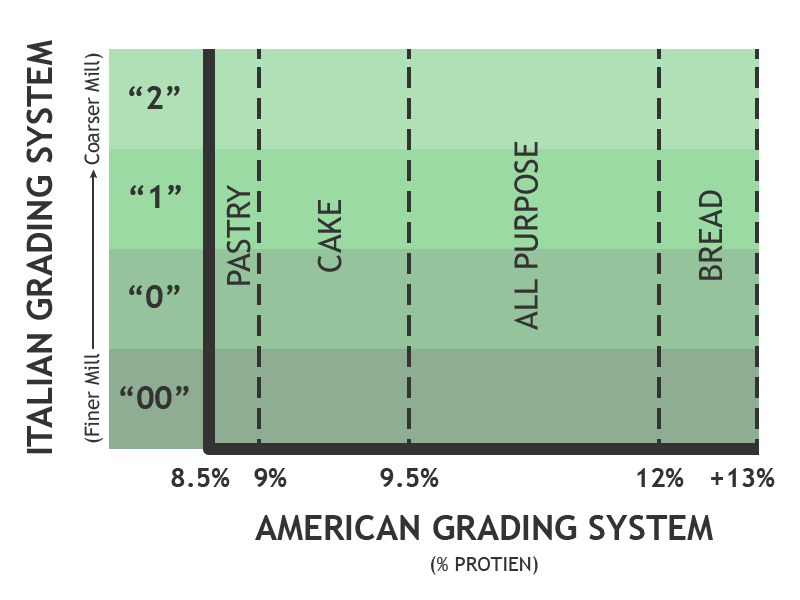Ever since my first delicious "pie" I've been a home-made pizza enthusiast. The yeast was highly active, the dough rolled easily, the oven worked it's magic. The whole thing seemed to be a cinch and the end result was perfect I say! Yet, like so many endeavors, perhaps my first pizza was beginners luck. It seems like every subsequent pizza I make gets further from that first lucky pizza perfection. This IN SPITE of focused dedicated efforts to master the art. I've made MANY pizza's since then and am learning loads about pizza. I've learned to weigh my ingredients, proof my yeast, preheat the pizza stone, and other tricks. Recently I've been researching flours, and whoa-boy is that ever a can of worms (See final paragraph).
The general understanding I am left with (as pertains to Pizza making) is that there is a distinction between how Italians and Americans classify flours. Italians classify based on mill size, while Americans generally group their flours by protein content. To illustrate this point here's a quick little reference graphic.

Now, there are some issues with this graphic (why green for one thing?) It seems to imply that one could find a Type 2 Pastry Flour just as easily as a Type 00 Bread Flour, which is unlikely and misleading. The message I was hoping to convey is that the American System and Italian systems have little to no relation to each other, so it is incorrect to say that "Type 00 is equivalent to a 'High Protien" Flour, such as bread. This is a confusion I encountered often in my google searching.
Now, I want to take a moment to gripe about the difficulties of researching something as simple as flour online. It generally takes me a few google searches before I even figure out exactly how to word exactly what I'm searching for. Then, I'll encounter a barrage of cooking websites (in this case) that purport to be expert, thorough, and final. However, rarely do their explanations align perfectly with one another. Combing through and comparing multiple websites gave me a general sense of an understanding about the flours, but due to all the discrepancies, it's difficult to really be confident. Given all the chaos of information, I'm conflicted about adding one more potential source of misinformation, but at the end of the day, I need a blog post. so...Let this be a disclaimer: The chart is simply a distillation of my understanding of the flour situation.